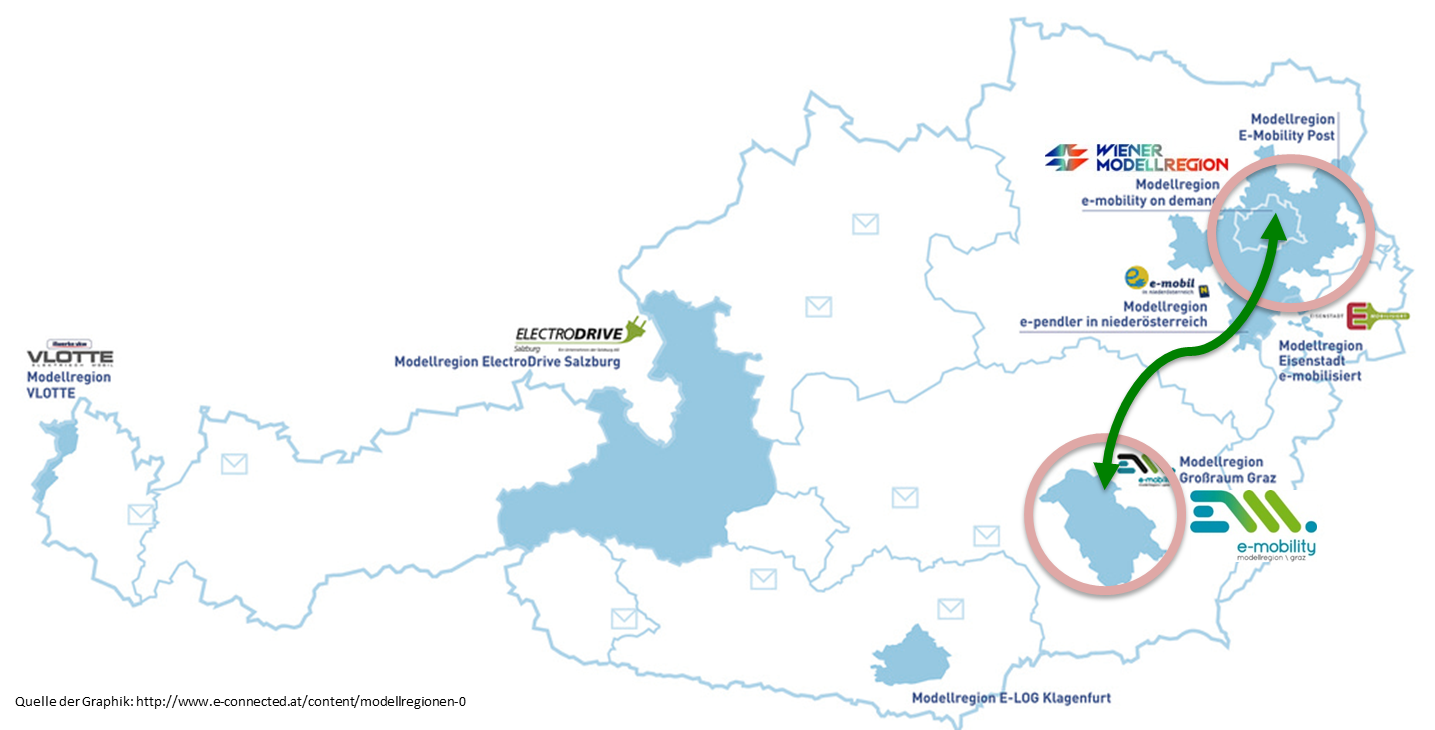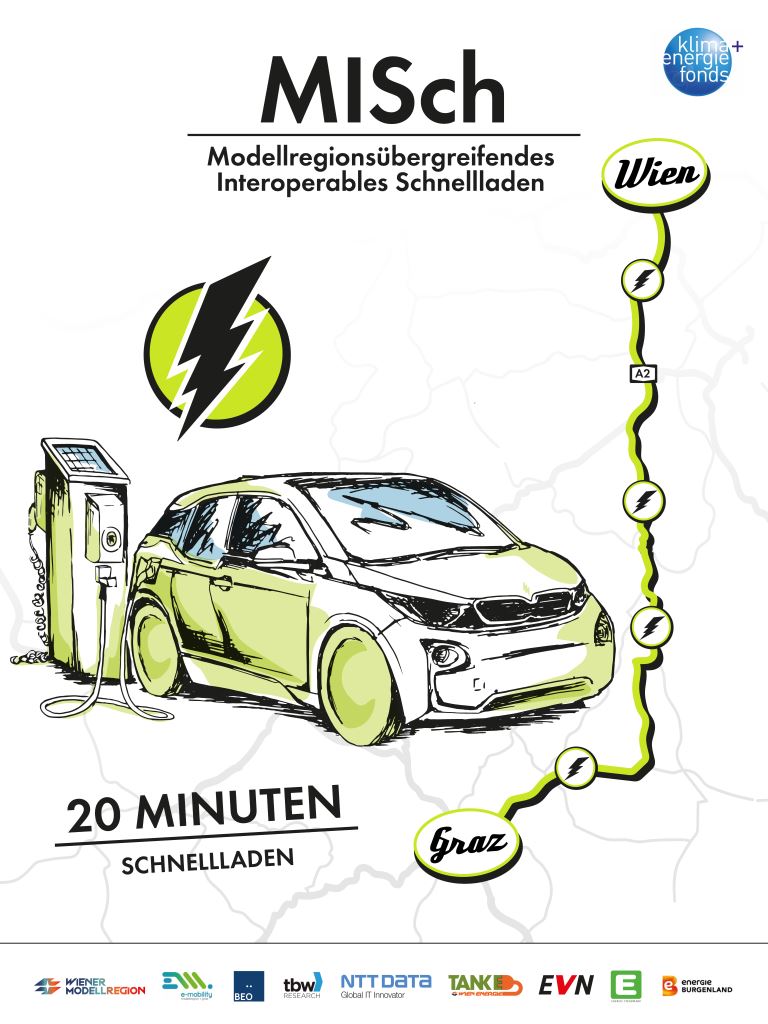The project objective was to expand the movement area of electric vehicles over the core area of the Electromobility Model Regions Vienna (e-mobility on demand), Greater Graz and e-commuter Lower Austria through interoperable fast charging infrastructure at the boarders of model regions and beyond. Intended to achieve this, four fast charging stations primarily at the highway rest areas on the south route from Vienna to Graz (Lower Austria and Styria) were planned to be built. For enabling a physical network together with the regional adjacent ‘Climate and energy model regions’ and providing them access to interoperable charging infrastructure, mobility gaps were intended to be filled. Within the framework of MISch, four fast charging points with a capacity of over 22 kWh were planned to be built in cooperation with the neighboring climate and energy model regions on the southern axis Vienna - Lower Austria - Styria - Graz at optimal locations (primarily at the highway rest stops). The construction of those interoperable fast charging infrastructure expands the movement area of electric vehicles across the currently existing model region. MISch was not just about the purely technical implementation of infrastructure charging points. The project-specific approach intended as a ‘landmark’ linking the model regions making the charging infrastructure visible, manufactured with uniform design, branding and usability. One goal was to ensure consistent electric mobility over longer distances as a key factor for meeting range anxiety and other barriers of a wide roll-out is (,signaling effect' of the project). Building on the ‘Interoperable loading point management’, opportunities for an interoperable and controlled charging of electric vehicles became possible e.g. to do transfer journeys of electric vehicles or commercial transport in the future between Vienna and Graz. A key aspect of this project was the implementation of the interoperable fast charging at the corridor Vienna - Graz which is easy to expand and roll out to other mobility corridors. A roll-out plan for other potential sites must be coordinated with the climate and energy model regions to avoid 'stranded investments' due to uncoordinated construction of proprietary charging infrastructure.
MISch
Content
Client
Climate- and Energy Fund
Project Partners
Neue Urbane Mobilität Wien GmbH (representing the model region ‚e-mobility on demand‘) (Project Lead),
tbw research GesmbH,
e-mobility Graz GmbH (representing the model region ‚Großraum Graz‘),
Energie Steiermark AG,
EVN AG,
NTT Data Österreich GmbH,
Wien Energie GmbH,
Energie Burgenland Green Power GmbH
Further Information
e-connected: https://e-connected.at/content/modellregions%C3%BCbergreifendes-interoperables-schnellladen (German)
Project Duration
March 2014 to December 2015
Services of tbwr
Project management,
stakeholder dialogue




